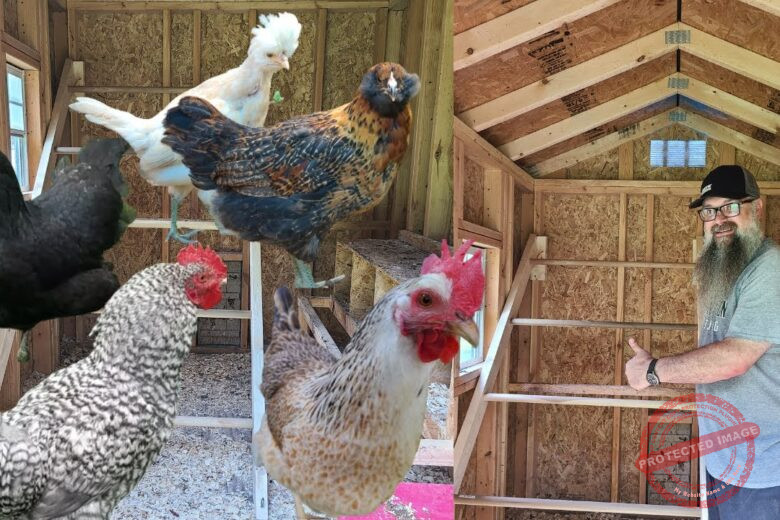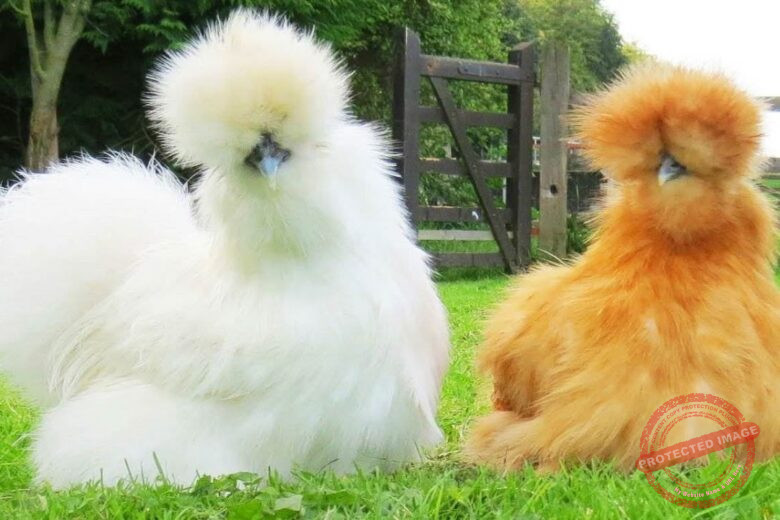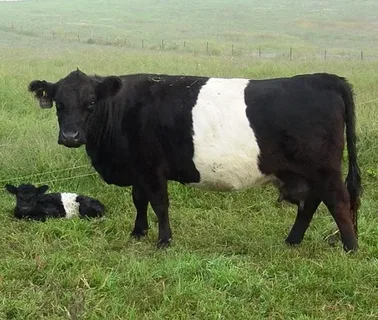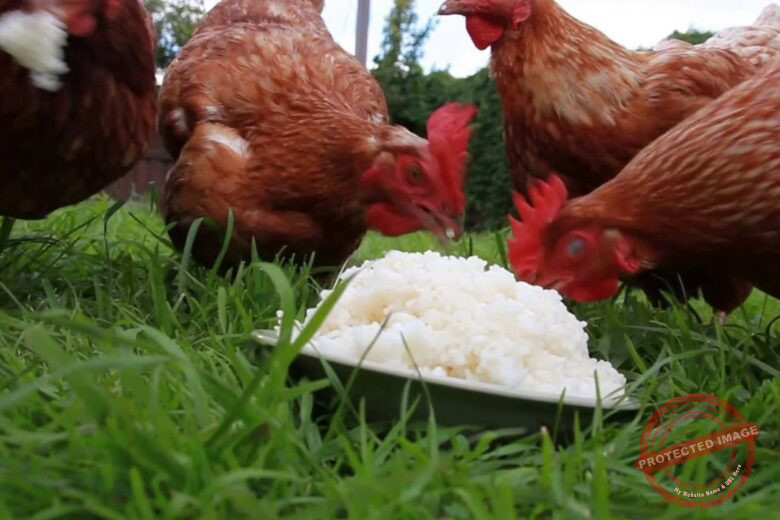There’s a certain rhythm that comes with raising chickens—the morning cluck, the gentle scratching of feet, and that satisfying moment when you reach into the nest box to find a fresh, warm egg. If you’ve ever dreamed of having a reliable layer that’s as friendly as she is productive, then ISA Brown chickens might just be the best choice you’ll ever make for your flock. They’re not fancy or flashy, but they’re honest, hardworking birds that rarely disappoint.
I still remember the first time I added a few ISA Browns to my backyard coop. They weren’t show birds, just simple brown hens with curious eyes and gentle tempers. Within weeks, they were outlaying every other hen on the farm. Rain or shine, they gave me eggs so regularly that I almost felt spoiled. They became the kind of birds you trust—the ones that keep the rhythm of the farm steady when everything else gets unpredictable.
What makes them special isn’t just their productivity, though. It’s their nature. ISA Browns are calm, affectionate, and easy to handle—even for beginners. They adapt beautifully to backyard setups and commercial environments alike. Whether you’re looking for ISA Brown for sale to start your first flock or to expand an existing one, these hens offer a blend of dependability and charm that’s hard to find elsewhere. Let’s dig into what makes them such a remarkable breed.
The Origins of ISA Brown Chickens
ISA Browns were first bred in France in the 1970s by the Institut de Sélection Animale (hence the name “ISA”). They were developed as a hybrid cross—designed specifically for consistent egg production. While their exact parent breeds remain a closely guarded secret, it’s believed they’re a mix of Rhode Island Reds and White Leghorns, which explains their balance of strength and productivity.
These birds were never intended for show—they were bred for performance. Over time, they’ve become the standard for commercial egg farms and small homesteads alike. When you see “ISA Brown for sale,” you’re looking at decades of selective breeding aimed at one goal: dependable, high-quality eggs with minimal fuss.
Appearance and Personality
At first glance, ISA Browns look simple—medium-sized hens with warm, reddish-brown feathers and lighter tails. But spend a few minutes with them, and you’ll realize they’re anything but ordinary. Their soft, expressive eyes and gentle curiosity make them natural companions. They follow you around the yard, pecking at your boots, just to see what you’re up to.
They’re also remarkably calm. Unlike flightier breeds, ISA Browns are easy to handle, making them a favorite for families with children. I’ve often found that even my most skeptical friends, the ones who “don’t do chickens,” warm up instantly to an ISA Brown sitting quietly in their lap.
Egg Production: The ISA Brown’s Superpower
Let’s get to the heart of it—these hens are egg machines. A healthy ISA Brown can lay 300 to 350 large brown eggs per year, sometimes even more under ideal conditions. That’s almost one egg every day!
Their laying cycle starts early, usually around 18 to 22 weeks of age, and continues strong for the first two years. After that, production slows down a bit, but by then, they’ve already given more eggs than most backyard breeds do in twice the time.
If you’re the type who sells eggs at the local market, ISA Browns practically pay for themselves. And if you just love collecting eggs each morning, you’ll never have an empty basket again.
Temperament and Social Behavior
ISA Browns are flock-friendly and get along well with other breeds. They rarely fight for dominance and tend to avoid confrontation. That said, they can be a little too gentle when housed with aggressive breeds—so it’s best to pair them with birds of similar temperament.
They thrive on attention and human interaction. If you spend time with them daily, they’ll recognize your voice and come running when they hear you call. On my farm, my ISA Browns are always the first to greet me when I open the coop door—curious and ready for their morning treats.
Housing and Space Requirements
ISA Browns aren’t picky, but they do appreciate a clean, comfortable home. Each hen should have at least 4 square feet of indoor space in the coop and 8–10 square feet of outdoor run space. They love to roam, scratch, and dust-bathe, so giving them room to move keeps them happy and healthy.
Ventilation is key—these hens don’t handle stuffy or overly humid conditions well. Make sure your coop has good airflow without being drafty. A few roosting bars and nesting boxes with fresh bedding are all they need to settle in comfortably.
Feeding Your ISA Browns
A high-quality layer feed is essential for keeping your ISA Browns productive. Since they lay so consistently, they need steady nutrition—especially calcium for strong eggshells. I like to mix crushed oyster shells into their feed or offer it free-choice on the side.
They’ll also appreciate kitchen scraps, garden greens, and the occasional handful of cracked corn. Just avoid salty or moldy food. Remember, a healthy diet means healthy eggs. And trust me, once you’ve cracked open a deep golden yolk from a well-fed ISA Brown, you’ll understand why their eggs are prized by backyard farmers everywhere.
Health and Lifespan
ISA Browns are hardy birds, but because of their intensive laying, they can be prone to a few issues like egg binding or reproductive fatigue later in life. Regular health checks, clean living conditions, and balanced nutrition go a long way in keeping them strong.
Their lifespan typically ranges from 3 to 5 years, though with great care, some can live longer. After their peak laying years, they still make excellent garden companions—turning soil, eating pests, and adding personality to the farmyard.
How to Care for ISA Browns Year-Round
Spring and Summer:
Make sure they have plenty of shade and water. Misting systems or shallow pans of water can help keep them cool during hot months.
Fall:
Check for molting. During this time, their egg production will slow, and they’ll look a little rough, but don’t worry—it’s perfectly normal. Provide extra protein to help feathers grow back strong.
Winter:
ISA Browns tolerate cold fairly well, but they need a dry coop free from drafts. Keep bedding thick and dry, and ensure water doesn’t freeze overnight.
Real-Life Farm Moment
One summer morning, I found one of my ISA Browns sitting stubbornly under the mulberry tree. I thought she was hiding from the heat, but when I checked later, she’d built a tiny nest out of leaves and twigs. Inside? Six perfectly brown eggs lined up like treasures. That’s the kind of bird an ISA Brown is—quietly dependable, doing her work with a gentle kind of grace.
Common Questions About ISA Browns
1. Are ISA Browns good for beginners?
Absolutely. They’re friendly, hardy, and forgiving if you’re still learning. Their calm temperament makes them easy to handle, even for kids.
2. Where can I find ISA Brown for sale?
You can find them through local hatcheries, farm supply stores, or reputable online breeders. Always check that the source maintains good breeding and animal welfare practices.
3. Do ISA Browns go broody?
Rarely. These hens are bred for egg laying, not for hatching. If you want chicks, you’ll need an incubator or a more broody breed like a Silkie or Orpington.
4. Can they live with other breeds?
Yes, though it’s best to keep them with other calm and gentle hens. Avoid mixing with overly dominant or aggressive breeds.
5. How long do they lay eggs?
Their most productive period is about two years, but they can continue laying sporadically after that. Some keepers choose to retire them to pasture or as garden helpers once their laying slows down.
How to Tell if an ISA Brown is Happy
A happy ISA Brown is easy to spot. She’ll be alert, busy scratching and pecking, with bright eyes and smooth feathers. She’ll greet you at feeding time and wander confidently around her coop. If she’s laying regularly and her comb is a healthy red, you’re doing something right.
Keep an eye out for signs of stress—such as feather loss, pale combs, or isolation from the flock. These usually point to heat, diet, or parasite issues that can be fixed with a bit of attention.
Why Every Flock Needs an ISA Brown
If you’re after a low-maintenance, high-reward chicken, ISA Browns are hard to beat. They bring steady egg production, gentle personalities, and a quiet charm to any backyard or farm. Whether you raise them for eggs, companionship, or simply the joy of caring for good birds, they’ll more than earn their place in your flock.
At the end of the day, these hens remind us what farming is really about—consistency, care, and the simple rewards of daily effort. ISA Browns don’t just fill your egg basket; they fill your mornings with a kind of peace that only farm life can bring.
So, are you thinking about adding a few ISA Browns to your flock—or are you already lucky enough to have some of these golden girls wandering your yard?



